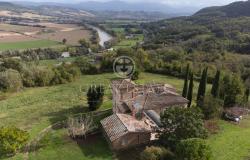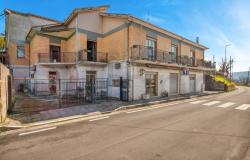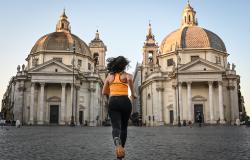 A new Roman exhibition seeks to show that the turmoil Iraq is suffering has not killed off the country's cultural life.
A new Roman exhibition seeks to show that the turmoil Iraq is suffering has not killed off the country's cultural life.
The city's Castel Sant'Angelo, a beautiful round castle built on Emperor Hadrian's mausoleum, is playing host to works by 12 contemporary Iraqi artists until June 12.
"The traditions, habits, dreams, smiles, faces and objects on show document the presence of life that is not at war," said Foreign Minister Massimo D'Alema at the inauguration of the show, entitled Mondo da Ritrovare (A World to Rediscover).
"The Iraq that needs to be rediscovered is the Iraq captured by the attentive, sensitive eyes of these artists".
The exhibition has been organized by the Italian Foreign Ministry's Task Force Iraq in collaboration with the Contemporary Visual Arts Society (CVAS), the first major Iraqi cultural organization set up after the US invasion in 2003.
The initiative is meant as part of Italy's contribution to the Middle Eastern country's reconstruction.
"This show is a way for us to take part in Iraq's rebirth, the reawakening of hope in the hearts of the Iraqi people and, at the same time, to get a glimpse of the future of our art," said CVAS President Nizar Al Rawi.
"In Rome these young artists will be the ambassadors of Iraqi culture around the world.
"Iraq's culture refuses to disappear. It perseveres with its message of everyday life".
Al Rawi pointed out that Iraq is home to the cradle of civilization - Mesopotamia.
One of the highlights of the show is 'Wictim', a harrowing painting of person doubled up in pain and grief by Zamel Nasser Inad.
Ali Talib's shot of an elderly craftsman hammering metal on the doorstep of his workshop, Work Sale, and Asra Ali's colourful painting of a woman playing a mandolin are more cheerful.
"This show brings together a vast variety of paintings, photographs and videos that reveal less well-known features of Iraqi life, which is not coloured only by the strong tones of war," explained curator Dobrila Denegri.
"The works also reveal the desire to start again, reconstruct and think of the future".
Castel Sant'Angelo was originally begun as a mausoleum for Hadrian (117-138) and his family.
It was gradually transformed into a castle and in 1277, it was acquired by the papacy.
The famous Passetto di Borgo walkway connecting the castle to the nearby Vatican was built subsequently.
This enabled the popes to flee to the safety of the castle when under attack. The fortified passageway was used by Pope Clement VII and his Swiss Guards to take refuge from Charles V's army during the sack of Rome in 1527.
The castle remained under the control of the popes who continued to use it as a fortress, but also as a prison and torture place.
According to legend, in 590, when Rome was in the throes of the plague, St. Gregory the Great saw a vision on the top of the fortress of the Archangel St. Michael sheathing his sword.
The vision heralded the end of the plague and from that time on the castle was known as Castel Sant'Angelo (Saint Angel's Castle).
The legend is commemorated by a huge bronze statue of an angel created by Peter Anton Verschaffelt in 1752 which stands on the top of the castle.
The monument, which fell into the hands of the Italian state after the country's unification in the 19th century, is now a museum.









